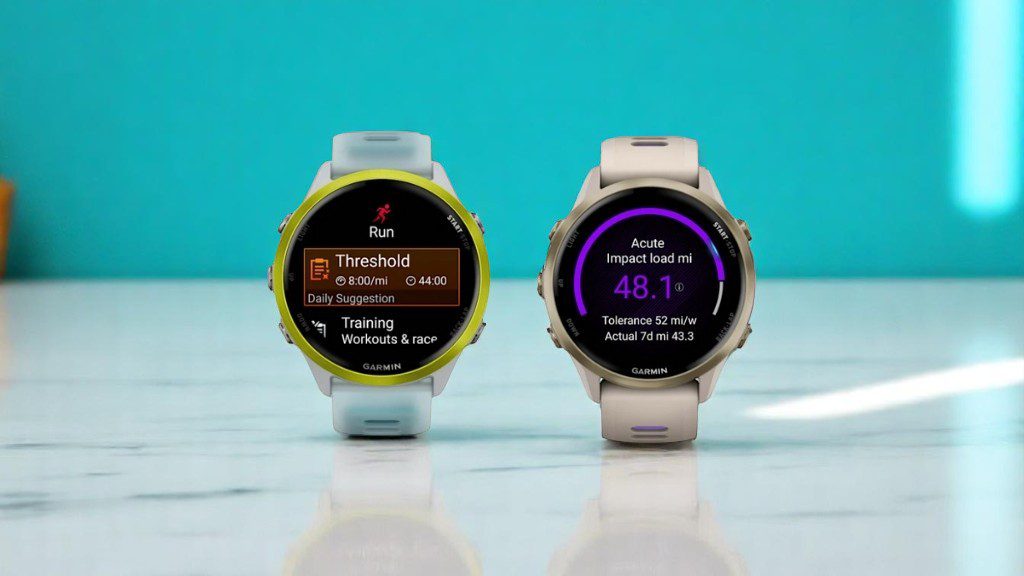Garmin has unveiled its latest smartwatch offerings for May 2025, and 970, revealing a distinct product strategy that reserves premium features for higher-tier devices. The launch demonstrates the company’s deliberate approach to market segmentation, with the flagship 970 priced at $749 and the mid-tier 570 at $599.
The Forerunner 970 emerges as Garmin’s premier running watch, introducing substantial technological advancements over its predecessors. The device features a sapphire crystal lens, the cutting-edge Elevate v5 optical heart rate sensor, and sophisticated capabilities including an on-demand EKG function. The integration of a built-in microphone and speaker system enables phone calls and voice commands, whilst a multi-coloured LED flashlight adds practical functionality.
Advanced health monitoring capabilities distinguish the 970, incorporating skin temperature tracking and running tolerance metrics. These features, combined with enhanced hardware durability, position the device as Garmin’s most sophisticated offering for serious athletes and technology enthusiasts.
In contrast, the Forerunner 570, despite its premium pricing, presents a more modest feature set. While it boasts improved battery performance during music playback, the device utilises older technology, including Corning Gorilla Glass 3 for its display. The deliberate limitation of advanced features highlights Garmin’s strategic approach to product differentiation.
This tiered strategy extends throughout Garmin’s 2025 catalogue. Entry-level models like the Instinct 3 and Vivoactive 6 maintain previous-generation sensors and minimal hardware updates, enabling stable pricing while the Forerunner series pushes technological boundaries at higher price points.
Market analysis suggests Garmin’s segmentation strategy serves a dual purpose: maintaining clear product differentiation whilst catering to diverse consumer needs. The 970 targets performance-focused users requiring comprehensive health tracking and smart features, while the 570 appeals to those seeking core functionality without flagship costs.
The implications of this strategy are significant for consumers navigating Garmin’s product range. Premium innovations remain exclusive to top-tier devices, with mid-range options offering incremental improvements rather than revolutionary changes. This approach shapes purchasing decisions, requiring buyers to carefully balance desired features against budget constraints.
As the fitness wearables market continues to evolve, Garmin’s tiered strategy may influence industry-wide approaches to product differentiation and pricing. The success of this model could establish new benchmarks for how manufacturers segment their offerings across price points.
Source: Android Central

